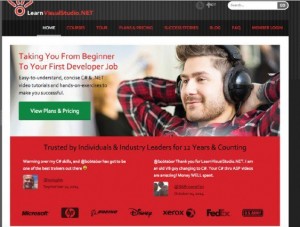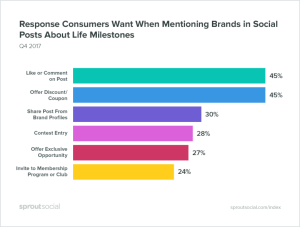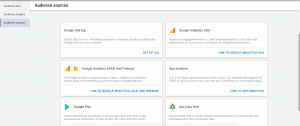If your goal is to sell more products and build a highly engaged audience, you’re in the right place! We have to keep in mind plenty of things when attempting to grow our company, but none are quite as important as building trust and rapport with our audience.
When a customer trusts your brand and likes products, they will stick around for years to come, which will keep your churn rate low. Essentially, your customer churn rate is the number of people that stop using your product after a predetermined time.
So, if you gained 100 new customers in a year, and 20 people stopped buying new products, you would have a churn rate of 20%. Your churn rate will vary depending on the size of your business and your industry. Now, consider that 2.14 billion people are expected to shop online in 2021, and it becomes clear how many customers and potential sales are at stake.
A high churn rate means you’re losing customers just as quickly as you gain them. If your churn rate is consistently high, you won’t have the time or resources to grow. We want to help resolve this problem by sharing 4 helpful tips you can use to reduce your churn rate in 2021.
Research Your Audience
One of the main reasons businesses lose customers is they don’t understand their pain points and goals. It’s not easy to market your products or content if you don’t know who you’re trying to reach.
The more you know about your target audience, the better chance you have of keeping them committed to your company after their initial purchase. There are several steps you should take when researching the people that could benefit most from your product or service.
Customer personas are profiles that business owners and marketing teams make to represent their most common visitors. So, a sporting goods store would make separate personas for people interested in football, baseball, and hockey. They can use this information to develop content and offers that resonate with each group. A hockey fan will care about an article featuring the best hockey drills, but a football fan would likely ignore your post.
When this type of research is used, it’s easy to figure out what kind of content or offers would benefit each customer. You can develop each persona by reviewing how visitors behave on your site, feedback forms, and directly engaging with consumers on social media.
Streamline Your Onboarding Plan
Another reason consumers stop engaging with brands is the product they bought doesn’t necessarily match the advertising. Imagine if you bought an email marketing SaaS that promised thousands of leads in the first year. At the end of your first year, you generated 40 more than the previous year. Would you pay for another annual subscription? If you’re like most people, the answer is no.
The key to reducing your churn rate is to help customers maximize the value of their purchase. We believe that customer education is the driving force behind success. You can seamlessly educate new users when they make a purchase by fine-tuning your onboarding program.
In most cases, onboarding happens through an email drip campaign. You can take your onboarding to the next level by creating interactive courses that get users familiar with your product or service. Use this opportunity to give new customers an interactive experience where they can learn how to use your product through practice.
You can also create blog guides that allow visitors to discover the features offered through your service before they ever commit to a purchase. Educating your customers on what your product does and how it will help is an excellent way to connect with people who genuinely need what you’re offering. If a new customer can see the value in your product, there’s a good chance they will come back for future orders.
Share Personalized Promotions and Content
If there’s one thing we’ve learned over the last several years, it’s that customers want more personalized offers and content. In fact, research shows that 4 out of 5 consumers claim that they want to receive more customized offers from businesses.
Personalization plays a pivotal role in growing your business. Your customers want their experience to evolve over time. As their needs change, your marketing should also change.
For example, let’s say you own an online pet store, and there’s one customer that comes back every month and buys a crate of cat food. After 6 months of shopping this way, they start getting two crates, one with cat food and another for dogs. If you see this trend continue for longer than a month, you may want to start sending out promotions and content that resonate with their new needs.
You can also use this browsing data to personalize content for each user. So, if someone only looks at two of your blog subcategories when they visit, they will only get emails about new uploads featured in those groups.
We recommend using the customer personas you created when researching your audience and segmenting your leads by their demographics and psychographics. Your personas will help you improve your personalization marketing strategy, and you can use the data from your marketing to fine-tune your customer profiles.
All of this boils down to your own simple idea; you’re doing what your visitors expect. If you can anticipate what they will need and deliver it to them and record time, there’s a good chance they will become lifelong customers.
Don’t Stop Improving
Finally, you must always take steps to improve all aspects of your business. Once you start pulling in tens of thousands of customers, you may think you’ve hit the peak. The reality is, once you hit the top, there will always be another business trying to acquire your customers.
You have to consistently impress your visitors if you want to reduce your churn rate. Surveys and polls are excellent ways to learn about how you can improve your products, website design, and content.
Listen to feedback from existing customers and make gradual changes that keep your business on top of your industry.
You’ll also want to pay attention to the performance of your website. We advise running a speed test and simplifying your contact forms and payment pages. These are usually the parts that frustrate users and cause them to leave when they wanted to stay.
You should also consider branching out where you sell your products. Believe it or not, 40% of businesses are now generating sales on social media platforms. If you can make your product more readily available across the internet, there’s a better chance that existing customers will buy from you in the future.
Business & Finance Articles on Business 2 Community
(57)
Report Post





